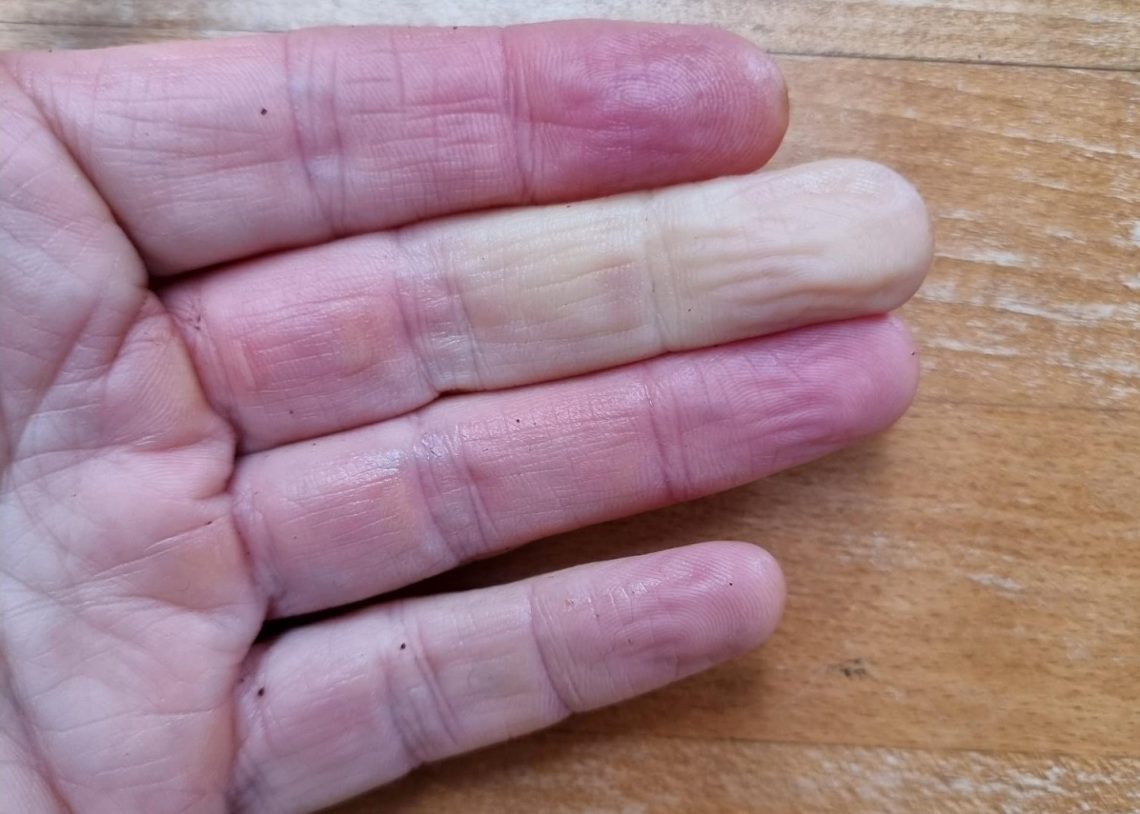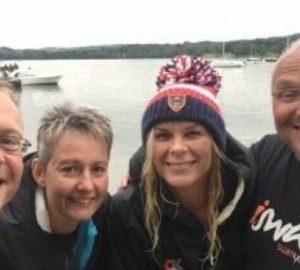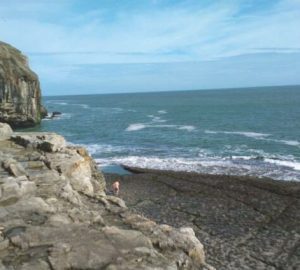
Does outdoor swimming make Raynaud’s worse?
Raynaud’s symptoms generally disappear when you warm up, but many swimmers are reasonably concerned that this repeated triggering of symptoms could make the condition worse
In people with Raynaud’s, the blood vessels in the extremities, particularly fingers and toes, are over-sensitive to the cold. When Raynaud’s is triggered, the fingers typically turn white, with associated pain and numbness. Later, during recovery, they can turn reddish or purple as the blood returns to the fingers, which can also be painful.
We put the question to Dr John Pauling, Consultant Rheumatologist at the Royal National Hospital for Rheumatic Diseases and an expert in Raynaud’s phenomenon. In a reassuring message for swimmers, he says: “repeated triggering of symptoms through outdoor swimming should not cause any worsening of Raynaud’s as long as there are no underlying health conditions causing their Raynaud’s symptoms in the first place.” For the majority of people, the cardiovascular health benefits of swimming will far outweigh any risks associated with outdoor swimming, although there are sensible precautions that should be taken to reduce the impact of symptoms of Raynaud’s.
This appears to match swimmers’ experience of the condition. We carried out a survey on Raynaud’s and outdoor swimming to which more than 1300 readers responded. We asked what had happened to swimmers’ symptoms since they had become an outdoor swimmer. Over half said they’d experienced no change in symptoms. Around a fifth said their symptoms had got worse, although a similar number reported their symptoms had improved and the remainder responded with “not applicable”. There are lots of factors beyond swimming that could contribute to a change in symptoms. If you do notice worsening symptoms of Raynaud’s, it is important to seek medical advice.
Dr Pauling pointed out that narrowing of blood vessels in the extremities is an entirely normal response to getting cold and an important mechanism for maintaining core temperature. People who only get symptoms when they get cold due to swimming may not have true Raynaud’s but are exhibiting a healthy response to cold exposure. Interestingly, in our survey, 1 in 6 respondents who don’t generally experience Raynaud’s symptoms frequently experience them while swimming, rising to 4 in 10 people swimming in water temperatures of less than 15 degrees.
We also asked Dr Pauling if being a Raynaud’s sufferer could make you more prone to non-freezing cold injury (NFCI), something that all cold water swimmers should be aware of. NFCI is a poorly understood condition that can cause long-term or permanent damage to affected body parts, usually the feet and hands. Note that initial symptoms for NFCI look similar to Raynaud’s. However, Raynaud’s symptoms should disappear shortly after swimming and do not generally result in any long-term pain or numbness. Dr Pauling says we don’t know whether being a Raynaud’s sufferer makes you more likely to suffer NFCI but would advise anyone with severe or worsening symptoms, particularly if they experience persistent symptoms that do not disappear on re-warming or who develop sores on their fingers, to seek medical advice as this could indicate an underlying condition that needs treatment.
Given that Raynaud’s symptoms can cause pain and discomfort, it makes sense to reduce the impact if you can. Dr Pauling recommends all the usual measures for warming up before and after a swim: warm up before getting into the water, dress quickly, bring blankets or extra layers for additional warmth, have a flask ready with a sweet warm drink. And dry your head, hands and feet quickly to reduce evaporative cooling which could lead to your core temperature dropping further.
Sadly, just over 3% of our survey respondents have given up swimming in cold water because of the discomfort they experience due to Raynaud’s. On the other hand, nearly 4 out of 5 people who experience Raynaud’s symptoms have not ever considered giving up outdoor swimming. They enjoy it too much. Luckily for them, it seems unlikely they are doing themselves any long-term damage and there are positive steps they may be able to take to reduce the impact of symptoms of Raynaud’s.
Top tips from survey respondents on outdoor swimming with Raynaud’s
- Undertake warm up exercises before getting into the water
- Heat up your clothes so they are warm when you put them on and include a windproof layer.
- Swing your arms in circles to push blood to the fingertips or shake hands vigorously.
- Have hot water bottles and hand warmers ready for after your swim. Hold the hot water bottle against your tummy or between your thighs (but not directly against the skin).
- Swim for less time to avoid getting too cold.
- Get special Raynaud’s silver gloves.
- Wait until all Raynaud’s symptoms have gone before showering.
- Wear a rash vest under your wetsuit for extra warmth.
- Drink something warm before your swim.
- Wear wrist warmers made from old socks.
- Warm the hands up slowly to reduce pain.
- Stand on a mat when changing to keep feet insulated from the ground.
- Go for a brisk walk once dressed.
- Massage hands and fingers after swimming.
- Try Wim Hof breathing exercises.
- Double socks and gloves.
- Clap.
For more help and advice on living with and managing Raynaud’s see the website of the Scleroderma and Raynaud’s UK charity.








